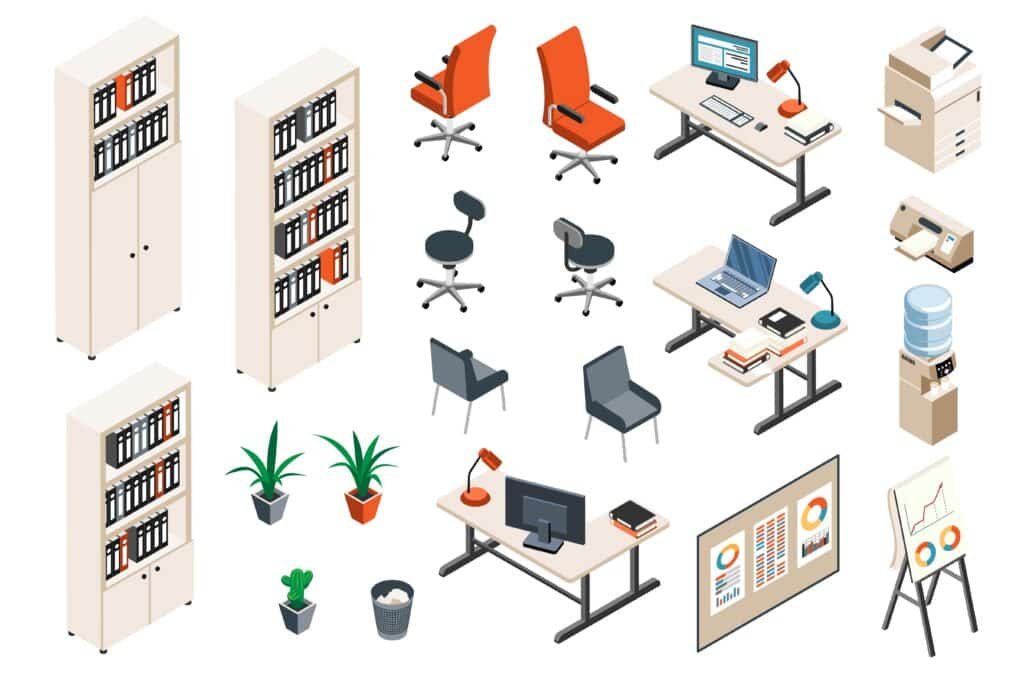
When it comes to setting up your office, choosing the right furniture is crucial. Not only does it contribute to the overall aesthetics, but it also plays a significant role in employee comfort, productivity, and well-being. In this article, we will explore different factors to consider when selecting office furniture, essential pieces to include, and tips to budget effectively. So, let’s dive in and find out what furniture you should buy for your office.
Understanding Your Office Space Needs
Before you start shopping for furniture, it’s essential to assess your office space thoroughly. Understanding the needs of your workspace will help you make informed decisions and avoid any potential challenges down the line.
Evaluating the Size and Layout of Your Office
The first step is to evaluate the size of your office. Take measurements and note any elements or limitations that may require specific furniture configurations. This assessment will ensure you choose furniture that fits seamlessly into your space.
When evaluating the layout of your office, consider the flow of traffic and the placement of essential equipment. For example, if you have a reception area, you’ll want to ensure that it is easily accessible and welcoming to visitors. Additionally, think about the location of power outlets and network connections to ensure that your furniture can be arranged in a way that allows for easy access to these resources.
Another aspect to consider is the natural lighting in your office. If you have large windows that provide ample sunlight, you may want to position workstations near these areas to create a more pleasant and energising environment. On the other hand, if your office lacks natural light, you may need to invest in additional lighting to ensure that your employees have adequate illumination for their tasks.
Determining the Number of Employees and Their Roles
Next, consider the number of employees and their specific roles within the company. Each employee will require a dedicated workspace, and understanding their job requirements will help you determine the type and quantity of furniture needed. For example, employees who spend most of their time on the phone may require a workstation with ample desk space for multitasking.
When determining the number of employees, also think about future growth and expansion. It’s essential to plan for additional hires and make sure that your office space can accommodate the increased workforce without feeling cramped or overcrowded. This may involve considering modular furniture options that can be easily reconfigured as your needs change.
Furthermore, consider the different departments within your organisation. Each department may have unique furniture requirements based on its specific functions. For example, a design team may need larger work surfaces and storage for their creative materials, while an administrative department may require more filing cabinets and shelving units.
Lastly, don’t forget to consider the comfort and well-being of your employees. Ergonomic furniture, such as adjustable chairs and standing desks, can help promote good posture and reduce the risk of musculoskeletal disorders. Investing in comfortable and supportive furniture can contribute to a healthier and more productive work environment.
Essential Office Furniture Pieces
Now that you have a clear understanding of your office space needs, let’s explore the essential furniture pieces you should consider including. These pieces are crucial for creating a functional and comfortable work environment for your employees.
Desks and Workstations
Desks and workstations are the centrepiece of the office. They provide a dedicated space for employees to work, organise themselves, and collaborate with colleagues. When selecting desks, consider factors such as size, durability, and storage options. Adjustable-height desks are also a great option to promote employee well-being and accommodate different work preferences.
Office Chairs for Comfort and Productivity
Investing in ergonomic office chairs is a must for any office. Employees spend long hours sitting at their desks, and uncomfortable chairs can lead to various health issues and decreased productivity. Look for chairs that offer adjustable features, proper lumbar support, and sufficient cushioning. Remember, a comfortable employee is a productive employee.
Storage Solutions: Filing Cabinets and Shelves
Keeping your office organised is essential for efficiency and productivity. Office storage such as filing cabinets and shelves provides ample storage space for documents, supplies, and personal belongings. Consider the volume of paper files and the storage requirements of your employees when selecting filing cabinets. Open shelves are also a great option for displaying books, decorative items, and company awards.
Selecting the Right Furniture Style
Office furniture should be functional and align with your company’s style and brand identity. The style you choose can impact the overall atmosphere and the impression you make on clients and visitors. Let’s explore some factors to consider when selecting the right furniture style for your office.
Modern vs. Traditional Office Furniture
When choosing between modern and traditional office furniture, consider your company’s values, industry, and target audience. Modern furniture designs often feature sleek lines and minimalistic aesthetics, ideal for creative and tech-oriented companies. On the other hand, traditional furniture exudes a timeless charm and may be more suitable for professional services or traditional industries.
Choosing Colours and Materials
Colours and materials play a crucial role in creating a cohesive office design. Consider your company’s branding colours and choose furniture that complements the overall colour scheme. Additionally, pay attention to durability and maintenance requirements when selecting materials. Furniture made from high-quality materials will ensure longevity and withstand daily wear and tear.
Ergonomics and Employee Well-being
Employee well-being should be a top priority for any organisation. Incorporating ergonomic furniture in your office design not only promotes health but also boosts productivity. Let’s delve deeper into the importance of ergonomics and how to strike the perfect balance between aesthetics and functionality.
Importance of Ergonomic Furniture
Ergonomic furniture is designed to support proper posture, reduce the risk of musculoskeletal disorders, and increase employee comfort. Adjustable chairs, standing desks, and monitor arms are just a few examples of ergonomic office furniture. By investing in these ergonomic solutions, you create a workspace that prioritises your employees’ well-being and fosters a positive work environment.
Balancing Aesthetics and Functionality
While ergonomic features are essential, it’s equally important to strike a balance between aesthetics and functionality. Your office furniture should not only provide comfort and support but also reflect your company’s values and culture. Consider incorporating elements like colour accents, statement pieces, or personalised touches to create an inspiring and welcoming workspace.
Budgeting for Office Furniture
Finally, let’s address the financial aspect of buying office furniture. Budgeting effectively will help you make informed decisions without compromising on quality or functionality.
Cost vs. Quality: Making the Right Investment
When it comes to office furniture, it’s essential to strike a balance between cost and quality. While it may be tempting to opt for the cheapest options available, keep in mind that low-quality furniture may not withstand regular use, resulting in additional expenses down the line. Aim for furniture that offers a reasonable price point without compromising on durability and ergonomics.
Tips for Saving Money on Office Furniture
If budget constraints are a concern, consider these cost-saving tips while purchasing office furniture. Look for sales, discounts, or bulk ordering options from reputable suppliers like OfficeSupermarket. Also, consider prioritising essential furniture items initially and gradually adding to your collection as your budget allows.
Now that you have a comprehensive understanding of what furniture to buy for your office, it’s time to start planning your space. Remember to assess your office’s needs, invest in essential pieces, choose a suitable style, prioritise ergonomics, and budget wisely. By following these guidelines, you’ll create a workspace that not only impresses but also supports your employees’ comfort and productivity.
 Development of a brand through trade mark protection (PDF)
Development of a brand through trade mark protection (PDF)  A truly global market (PDF)
A truly global market (PDF)  Creating an ultimate travel experience (PDF)
Creating an ultimate travel experience (PDF) 